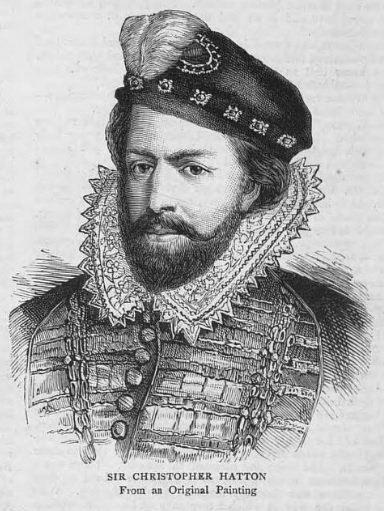Hatton Garden: A Brief History
Last updated on the 24th of May 2023 by Huxley Mann.
Hatton Garden is a historic district located in the heart of London's Holborn neighbourhood. The area has been synonymous with jewellery and precious stones for centuries, with a rich history dating back to medieval times. Today, Hatton Garden is renowned as one of the world's foremost centres for diamond trading and manufacture, attracting jewellers and gemologists from across the globe. Over the years, Hatton Garden has undergone many changes, but its enduring legacy as a hub for luxury goods and skilled craftsmanship continues to thrive. In this article, we will explore the fascinating history of Hatton Garden and its evolution into a global centre for the diamond industry.
Hatton Garden takes its name from Sir Christopher Hatton, a prominent statesman and nobleman who lived during the 16th century. Sir Hatton was a favourite of Queen Elizabeth I and served as her Lord Chancellor for several years. In 1581, he acquired a large estate in the area that would later become Hatton Garden, which was largely rural and undeveloped at the time. Over the years, Sir Hatton's estate was gradually subdivided and sold off to various landowners, leading to the development of the district as we know it today. Despite its transformation over time, Hatton Garden has retained its association with Sir Hatton's legacy and remains an integral part of London's history and culture.
Around two hundred years later, in 1866, a farmer's son came across a pebble-like stone on the banks of the Orange River near Hopetown in South Africa. The pebble turned out to be the renowned 84.5-carat (4.5g) diamond that marked the spot for the world-famous Kimberley diamond mine. Upon news of the farmer's fortune, prospectors rushed to the mine from all over the world - but by 1888, following a series of mergers with smaller companies, Cecil Rhodes had seen off the competition, winning a monopoly on the market of 95% under the business name De Beers Consolidated Mines. The Kimberly mine yielded three tons of diamonds before its closure in 1914.
The Orange River in South Africa.
In 1890, Cecil Rhodes invited a group of fellow businesses based in Hatton Garden to form a purchasing syndicate. This meant that all the De Beers diamonds were to be sold only in Hatton Garden through their wholesalers, who became the biggest diamond distributors in the world.
By 1895, hundreds of diamond merchants and brokers operated from Hatton Garden. In addition, many other trades were naturally popping up, such as cutters, polishers, bullion dealers, watchmakers, silversmiths and pearl merchants, rapidly moving in as the industry boomed.
By 1910 Hatton Garden was firmly established as London's diamond and jewellery quarter, with over 300 businesses and workshops related to the trade based there, becoming a world-renowned powerhouse of British skill and craftsmanship.
Within those tradesmen, it naturally included the watch repair, polishing and manufacturing businesses - a service in constant demand due to the ever-growing popularity of luxury watches.
Interestingly, Hatton Garden was also the home to the invention of the machine gun. In 1881, Sir Hiram Maxim had a factory at 57 Hatton Garden and invented and started to produce the Maxim Gun, capable of firing 666 rounds a minute.
The street of Hatton Garden in the 21st Century.
While Hatton Garden is primarily known for its diamond trade, it has also gained a reputation as a centre for watch repair and maintenance. Allowing companies like ours to thrive and provide an all-encompassing range of services carried out by highly skilled watchmakers. Is your timepiece in need of some TLC? Visit our Hatton Garden watch repair shop for a no-obligation quote.





